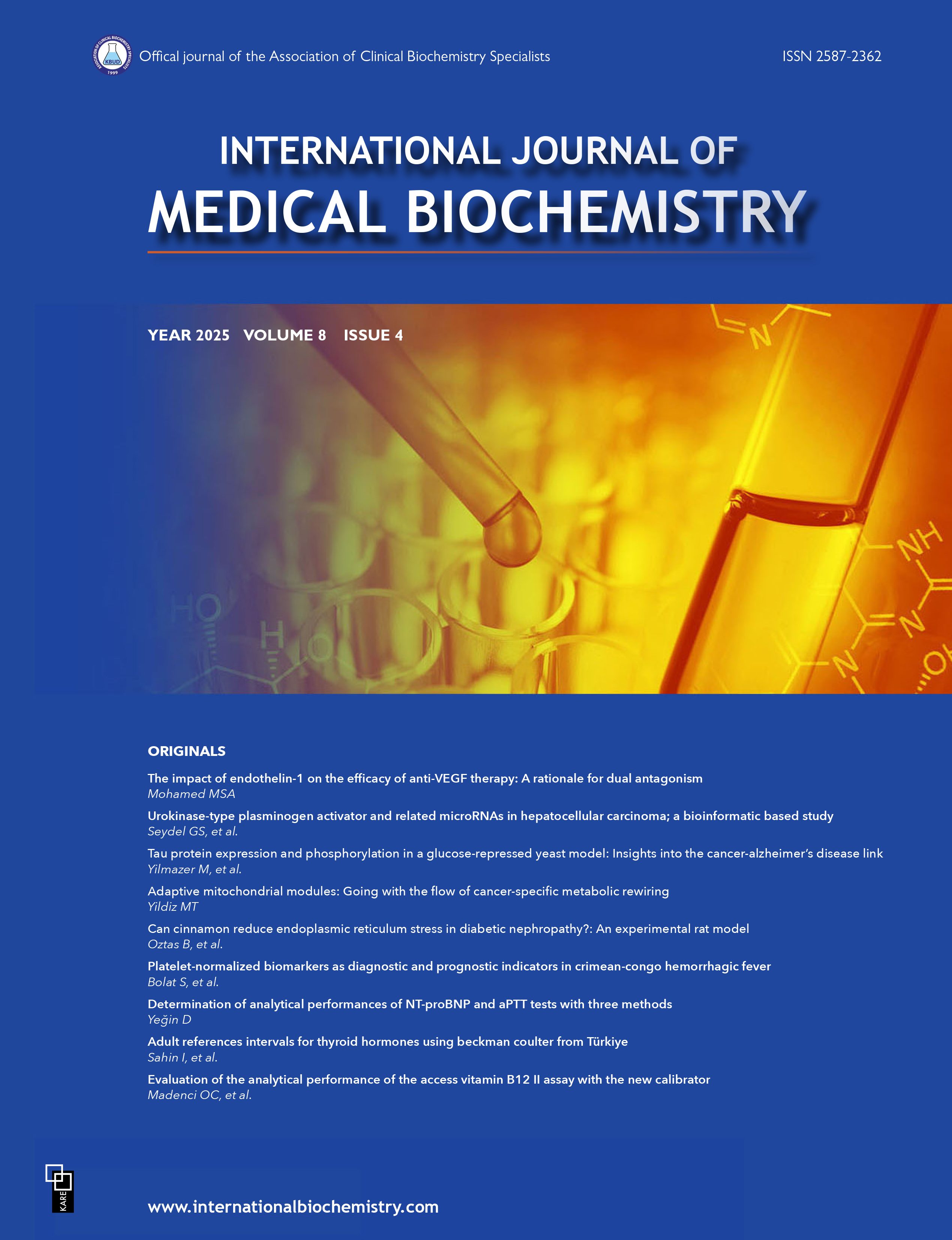The effect of dysnatremia on prognosis and mortality in critically ill patients with COVID-19
Sinem Bayrakçı1, Huseyin Gurbuz2, Hülya Çiçek31Department of Intensive Care, Dr. Ersin Arslan Training and Research Hospital, Gaziantep, Turkiye2Department of Emergency Medicine, Dr. Ersin Arslan Training and Research Hospital, Gaziantep, Turkiye
3Department of Biochemistry, Gaziantep University Faculty of Medicine, Gaziantep, Turkiye
INTRODUCTION: Sodium disorders, the most common electrolyte disorders in hospitalized patients, are common in hospitalized patients with pneumonia. Numerous studies have shown that sodium abnormalities are independent risk factors for mortality, medical intensive care unit (ICU) admission, and prolonged hospital stay. The aim of the study was to investigate the prevalence of dysnatremia and the effect of dysnatremia on prognosis and mortality in critically ill COVID-19 patients.
METHODS: This retrospective study was performed between June 1, 2021, and July 30, 2021, in COVID-19 ICUs. 149 critically ill, laboratory-confirmed COVID-19 patients admitted to the ICU were included in the study. The collected data included demographic data, comorbidities, severity of illness, and laboratory tests (serum C-reactive protein, lymphocyte, ferritin, sodium, chloride, and potassium levels). The prognosis was evaluated in terms of mortality, need for mechanical ventilation, and length of ICU stay.
RESULTS: At ICU admission, hyponatremia was present in 33 (22.1%) patients, whereas hypernatremia was detected in 14 (9.5%) patients. 102 (68.4%) patients had normal sodium levels. The mortality rate for normonatremic, hyponatremic, and hypernatremic patients was 50.0%, 57.7%, and 78.6%, respectively. These results indicated a statistically significantly higher mortality rate in patients with baseline hypernatremia (p=0.05).
DISCUSSION AND CONCLUSION: Among critically ill COVID-19 patients in the ICU, dysnatremia was common at admission and hyponatremia was more common than hypernatremia. Hypernatremia was related to mortality. Admission sodium levels can be a predictor of mortality in COVID-19 patients who are critically ill.
Keywords: Coronavirus disease 2019, dysnatremia, intensive care unit, hipernatremia, hyponatremia
Manuscript Language: English







